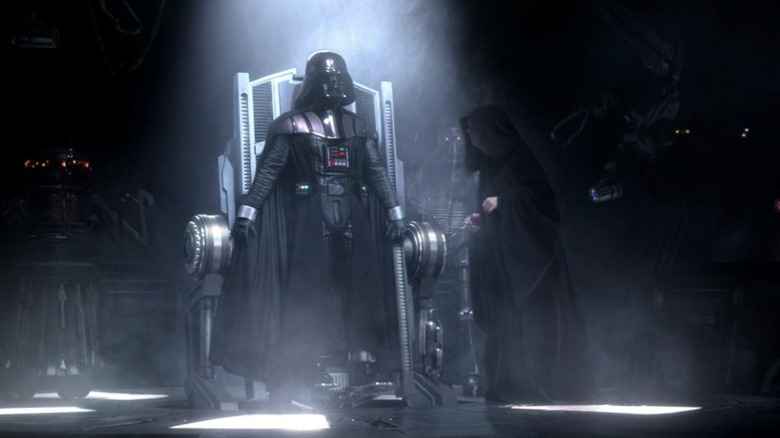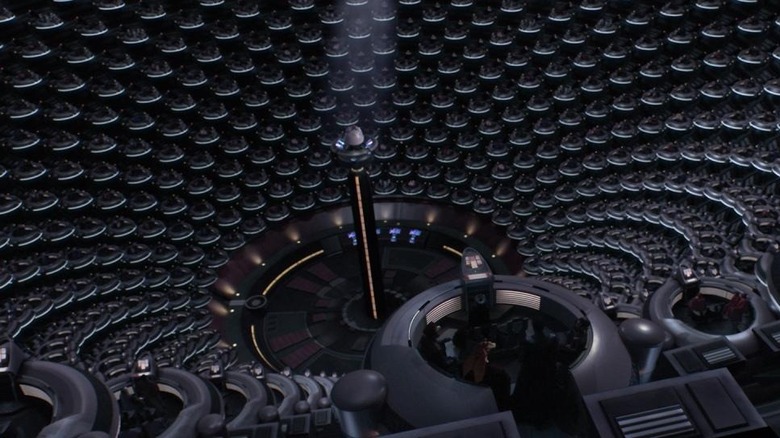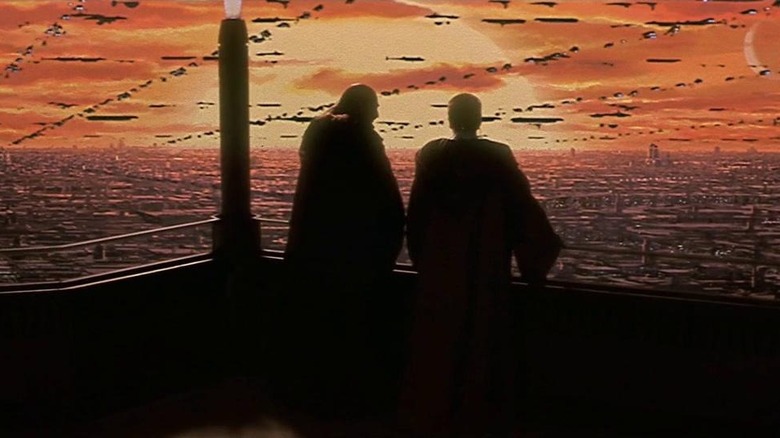George Lucas' Decision To Make The Star Wars Prequels Was 'Driven By Technology'
The tale of the highly anticipated "Star Wars" prequel trilogy is as old as May 19, 1999, when the "dark ages" (a period of time fans recall when the beloved franchise was "absent from the public consciousness") would finally meet its end with the release of "Star Wars: Episode I — The Phantom Menace." The hype was next level: George Lucas was back once again as the sole director of this latest trilogy promised to follow Anakin Skywalker's (Hayden Christensen) descent into the dark side and his rebirth as Darth Vader.
Lucas' "The Phantom Menace" had been loved and celebrated — making over 900k in the worldwide box office, but became maligned by fans as time went on. With the release of the controversial Disney sequel trilogy, the pendulum has swung once again in favor of Lucas's singular and ambitious vision of the prequels.
"The Phantom Menace" celebrated its 20th anniversary in 2019, so the official Star Wars blog released an oral history of the film's creation. "All of the 'Star Wars' movies, in one way or another, are about me and my take on the world," Lucas told StarWars.com. If the original trilogy was Lucas's whimsical coming-of-age about leaving one's hometown, meeting new people, and finding life's purpose — the prequels were a wider political allegory about the failures of American democracy and its complacency to corruption. When Lucas was asked about his motivations to tell this story, he admitted that his choice to make the prequels "was more or less driven by technology."
A bigger vision demanded bigger technology
It's increasingly difficult to imagine now that "Star Wars" has been solidified as one our largest pop culture phenomenons, but the three films that this multi-media franchise are built on came from relatively small, dollar-stretching budgets, innovation, and creativity. "The first three Star Wars films were designed very, very carefully to be done cheaply. We didn't go to any big cities, we didn't have a lot of costumes, we didn't have a lot of extras," Lucas explained. "We didn't have a lot of the things that cost money on a movie like that. So it was really driven by what I could afford. You have to remember, the first film was made for 13 million dollars. Today, that same film costs 300 million dollars. Even in those days, '2001 [A Space Odyssey]' cost like 25 million dollars. And I think we had more special effects than that did."
When "Episode I" and the rest of the prequel trilogy came to fruition, not only was Lucas richer from his work on the original trilogy, but modern technology had progressed just enough to start creating more complex settings.
If Lucas was going to portray a moment of political corruption within the galaxy, he had to convey a sense of scale that wasn't possible with the technology they used to tell the original trilogy's story. "With 'Episode I,' I didn't want to tell a limited story. I had to go into the politics and the bigger issues of the Republic and that sort of thing. I had to go into bigger issues. And in order to do that, I had to come up with a way of doing it, and that's what digital technology brought me," Lucas continued.
For better or for worse, Lucas pioneered CG technology
The brand new opportunities CG brought to storytelling was exciting to Lucas, and it's easy to see why he was so enthusiastic about it creating the prequel trilogy and finally breathing life into the "Star Wars" universe that he's been holding in:
"I had Yoda but he couldn't fight. I had cities, but I couldn't build models that big. I had lots and lots of costumes, but I couldn't afford to make them. So there were a lot of issues that were just practical — 'Episode I' wasn't doable for a long time, so I waited until we had the technology to do it."
Of course, Lucas's dependence on CG storytelling would also become something he would be heavily criticized for. A lot of the beauty and ingenuity of the original "Star Wars" films came from thinking around the budget and realistic limitations, but in the prequels, the over-reliance on CG elements felt as if they lacked a sense of physicality and frequently broke immersion for audiences. Infamously, Lucas would double down on this attitude, releasing special editions of the original "Star Wars" trilogy, adding new background elements, new scenes, and a multitude of changes that have been preserved in every home video/streaming release to date. (Fan-rendered restorations of the old cuts exist, however.)
When Lucas was still actively directing, he was a forward-thinking director with the ambition to completely make use of modern technologies, and the prequel trilogy stands as an encapsulation of that ambition for better or for worse.


